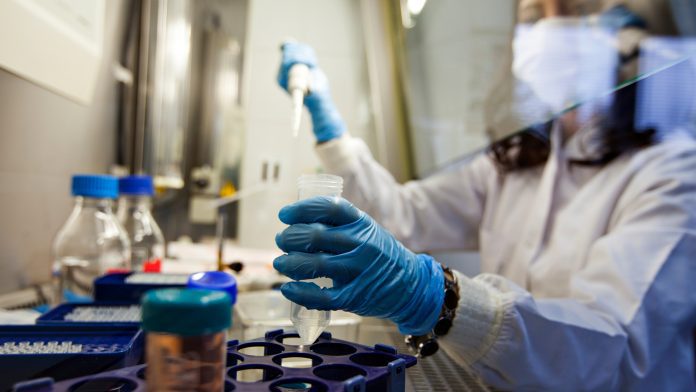
A stem cell study could revolutionise treatment for Wiskott-Aldrich syndrome, a rare immune disease.
Wiskott-Aldrich syndrome is a rare immune disease, leading to higher susceptibility to infections and abnormal bleeding. It affects around one in every 100,000 babies, causing unique health challenges throughout life. Previous research, scaling back to almost 30 years, found gene mutations that encode the Wiskott–Aldrich syndrome protein (WASP) cause the immune abnormality, but the exact functions remain unknown.
Stem cell biologist Mo Li and colleagues from King Abdullah University of Science and Technology teamed up with researchers from Salk Institute for Biological Studies in the US to provide new insight into Wiskott-Aldrich syndrome.
Understanding the origin and function of Wiskott-Aldrich syndrome
In a collaborative effort, the researchers created a panel of induced pluripotent stem cells (iPSCs) from patients with Wiskott-Aldrich syndrome. They employed gene editing to either fix the mutational error of patient iPSCs or delete the Wiskott-Aldrich syndrome gene of a WT iPSC line. This results in paired stem cell lines that match in all ways except in their Wiskott Aldrich syndrome gene sequence.
“These are powerful models that can help us understand WASP functions and the disease mechanisms of Wiskott-Aldrich syndrome in an authentic human cellular context,” said Li.
The stem cells and their differentiated progeny meant the researchers could examine WASP activity in different immune cell lineages. The findings illuminated that cells without working WASP had elevated levels of a group of proteins called RNA splicing factors, which play a key role in processing gene transcripts.
High levels of RNA splicing factors can lead to missing domains, leading to protein function suffering and the cells becoming unwell.
How WASP works with splicing factors
Bioengineer Samir Hamdan and his team worked with the researchers to show that an operational version of WASP works with a particular splicing factor, SRSF2. The researchers showed that WASP constrains the activity of SRSF2 by producing transient liquid-like clusters of protein and nucleic acids. These are known as biomolecular condensates and tend to contain WASP and DNA-to-RNA copying enzymes, newly synthesised gene transcripts and splicing factors, including SRSF2.
“Our study reveals for the first time that WASP is a phase-separated protein that can directly participate in the process of RNA splicing,” said co-first author and PhD student Baolei Yuan.
Remarkably, the WASP deficiencies could be overcome by genetically targeting the activity of SRSF2. For example, stem cell-derived immune cells knock down the expression of this splicing factor, preventing the release of inflammation-promoting molecules, an exciting finding that encourages therapeutic possibilities.
“SRSF2 can be a potential target for managing Wiskott-Aldrich syndrome disease,” concluded the other co-first author and PhD student Xuan Zhou.
























